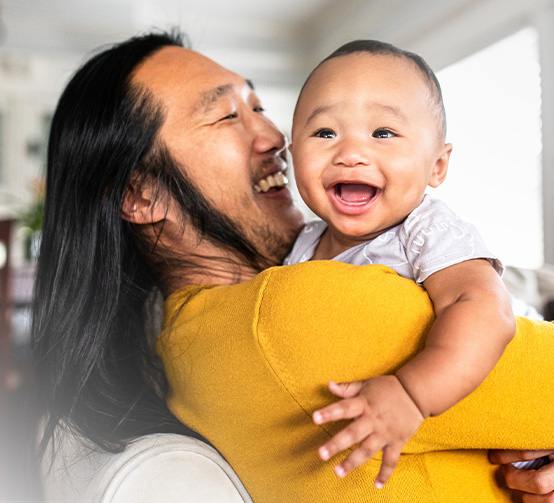
Experienced Child Custody Lawyer in Albuquerque
Child custody is perhaps one of the most difficult and emotional aspects of family law. Separating from a relationship is never easy, and it becomes even more difficult when a child is involved. It is challenging to hold negative feelings for a person, but at the same time acknowledge that your child has positive feelings for that parent. A child is a combination of both parents, and they reflect their own sense of value and self-worth in how their parents treat each other. Your ability to reduce conflict with the other parent will increase your child’s emotional stability, cognitive growth, and ability to create trusting and meaningful relationships. However, a positive and smooth co-parenting relationship between parents is not always possible. In some cases, it truly can be in the best interest of a child if one parent does not have shared custody, or significant time at all, with that child. If you cannot agree on a custody schedule for your child, a judge will have to decide for you. Custody can be a heavily litigated area but can be navigated with the right legal counsel.
Protect your child's future with the right legal guidance. Contact us today to discuss your custody options and how we can help.
Our Commitment to You
Dedicated to Protecting Your Family's Future with Integrity and Care
-
Reliable Guidance Through Complex IssuesFrom family law to estate planning, Rebecca navigates the complexities of New Mexico law with clarity and care, so you can focus on what matters most.
-
Client-Focused ApproachAt The Mulcahy Law Firm, you’re not just another case—you’re a priority. Rebecca is dedicated to building trust and achieving the best possible outcomes.
-
Decades of Legal ExperienceBacked by years of practice, Rebecca brings seasoned expertise to every case, offering clients confidence and peace of mind.
-
Personalized Legal RepresentationRebecca Mulcahy provides attentive and customized legal solutions, ensuring every client’s unique needs are fully understood and addressed.
Types of Child Custody
There are two types of custody: physical custody and legal custody. Most often, parties enter a “Parenting Plan” which outlines the details of custody in one document, but heavily litigated cases may have physical and legal custody elements spread through several orders.
- Physical Custody: refers to timesharing and all of the related details. What days are the child with each parent? How is the child exchanged between homes? How are holidays distributed? How much vacation time does each parent get? All of these considerations and more are outlined in detail in the Parenting Plan. Joint physical custody means that the timesharing schedule is equal or near-equal. If one parent has the majority of the calendar year, that parent has “primary custody” of the child.
- Legal Custody: refers to making decisions that affect major areas of the child’s life (residence, religion, recreational activities, school, and non-emergency medical care). These legal custody areas create what is called the “status quo” for a child. Joint legal custody means both parents must agree on a change before that change can occur. This prevents one parent from changing a child’s school or doctor without the other parent’s approval. Sole legal custody, on the other hand, grants decision-making power to one parent.
Orders for physical and legal custody are related, but do not always exactly mirror each other. There are many different combinations of legal and physical custody. For example, you can have primary physical custody of a child and still have joint legal custody between the parents. On the other hand, you could have a child spend equal time in both parent’s care, but one parent is awarded sole legal custody. The court will always prefer both joint physical and joint legal custody, as this is the best opportunity for a child to have meaningful relationships with both parents. Ultimately, however, the specific circumstances of your case will dictate how the court decides this issue.


What Our Clients Are Saying
Trusted by Families Across New Mexico
-
“Completing Families with Care and Expertise”
“Quick, thorough, and supportive—Rebecca made our step-parent adoption seamless. Thanks to her, our family is whole. Mulcahy Law is our go-to!”- Nina G. -
“Dedication Beyond Expectations”
“Rebecca’s commitment shines through—she delivered results ahead of schedule, even during maternity leave. 110% effort for every client! Thank you, Rebecca!”- Richard H. -
“Guiding You Through Life’s Toughest Moments”
“Rebecca’s confidence and care made the guardianship process seamless. Always prompt, prepared, and supportive—she’s the lawyer you can trust!”- Kelsie T. -
“Going Above and Beyond for Clients”
““AMAZING” service that exceeds expectations! Rebecca is the go-to attorney for family law cases. Highly recommended!”- Anjelica M. -
“Simplifying Adoption with Speed and Care”
“Rebecca made our adoption process smooth and quick, always responding fast to questions. We’re grateful for her excellent service!”- Brittany O. -
“Trusted Guidance for Adoption Success”
“Out-of-state adult adoption made easy! Rebecca’s professionalism, honesty, and fair pricing set Mulcahy Law apart. Highly recommend for adoption cases!”- Virginia P.
Factors Considered in Custody Decisions
If the court is going to decide custody for you, the judge will need to determine what is in the child’s “best interest” and make an order that supports that determination. There are many factors the court will look to when deciding what this best interest is. Some common things the court will consider include:
- The age of the child. New Mexico law states that the custody preference of a child who is fourteen years or older will be considered in the court’s analysis (be careful: while this statute gives a teenager more of a voice in the decision-making process, this does not mean they get to make the decisions). The child’s age will also affect the court’s decision based off of the emotional and cognitive stage the child is in. Generally, very young children tend to bond more with one parent and so should be in that parent’s primary custody, but the child also requires frequent contact with the other parent to establish and maintain a bond. The older a child becomes, the bond is more equally shared between parents and thus physical custody can be more equally distributed between households. School age is a good time to start the transition to a shared custody agreement if there are no other concerns.
- The child’s relationship with each parent. An important question the court will consider is how bonded the child is to each parent. This can interplay with the age of the child, as discussed above younger children tend to bond more with one parent than another. However, family circumstances can also play a role in the current bond between parent and child. An older child who had little contact with one parent for several years will not be immediately placed in a 50/50 custody schedule. A traumatic event between parent and child could also affect the court’s decision in a custody arrangement.
- The relationship of the parents with each other. The court will carefully consider the co-parent relationship between the parents. In general, the court is unlikely to order shared custody if the parents cannot communicate well with each other. The more you can show a willingness and ability to work with the other parent, the more likely you are to be awarded significant time with your child. This not only applies to physical custody situations (smooth transitions between households, no interference with the other parent’s time, etc.), but to legal custody issues (ability to discuss a child’s issues with the other parent and come to a resolution, whether you tend to enroll and un-enroll a child from status quo areas without the other parent’s consent, etc.). Even a parent with primary custody should keep this in mind, as interference with the other parent’s rights can have negative consequences. The court can also make several orders to try and improve communication, including anger management classes, co-parenting classes, or therapy.
- Other important relationships for the child, such as siblings, stepparents, and grandparents can affect a custody decision. The court will want a child to maintain healthy attachments that are already formed, and to encourage new attachments when possible. The court will not want to remove a child from important relationships, especially siblings, without good cause. Unhealthy relationships, on the other hand, can give the court cause to remove a child from a home, or at least limit the time spent there.
- How a child has adapted to current status quo. The court will also consider how the child is currently adjusted in his home life, school life, and community. Red flags in a child’s adjustment could signal to the court that a change is needed, or if there have been a lot of changes to the child’s life recently, that more stability is needed. Most children have at least some adjustment issues when parents are going through a custody battle. The court can make orders to help a child adjust to current circumstances, including therapy for the child, the parents, or both, and limit parents from discussing the case or their dissatisfaction with the other parent in front of the child.
If you’re facing a child custody matter, don’t navigate it alone. The Mulcahy Law Firm is here to protect your parental rights and the well-being of your child. Call (505) 595-1430 today or reach out online to schedule a consultation.

Proudly Serving Albuquerque, NM Since 2017